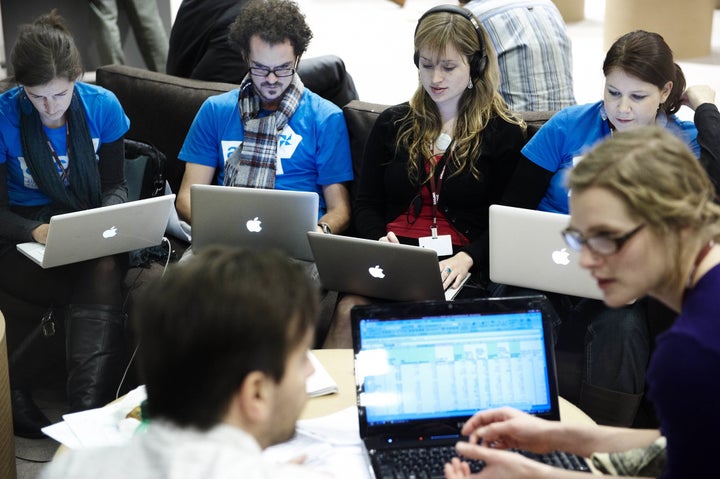
It's 5 in the morning on a Monday, and California native Tricia Wang is waking up in a second-tier city in central China. An ethnographer and researcher in how disadvantaged groups like migrant and low-income communities use technology, she immerses herself in her research environment.
Today's office is a smoky wangba (网吧: Internet cafe), where she was lucky enough to snag a couch to crash on. Many of the patrons around her are sleeping upright, or sideways, at their desks. All around her are computers, computers, computers, and hundreds of individuals, almost all of them migrants from different parts of rural China.
"In China," she tells me over Skype, "there are not a lot of public spaces where you can easily congregate. Sure, you have malls and bus stops, but it's the Internet cafes that don't discriminate on who can come in and out. You can just chill there, you can hang out with your friends. There's cheap food to buy, and there are bathrooms."
I became familiar with Wang's work, appropriately enough, through what may be the world's most famous Internet cafe (albeit one where people bring their own computers). At SXSW 2011, she gave a talk titled "Sleeping in Internet Cafes: The Next 300 Million Chinese Internet Users". It was part of the event's Future 15 series, which addresses diversity on the Internet.
She explained that Internet cafes in China operate as "third spaces," a concept developed by sociologist Ray Oldenburg. Between the totally public space of work and the totally private space of home are third spaces, like bars, libraries, and public parks, where people can socialize and share information.
She compared 21st century Chinese migrants' use of Internet cafes to early 20th century American immigrants' use of bars and saloons in the early 1900s. These third spaces strengthen the ties of the community, especially amongst disparate immigrant groups new to a city. Newcomers etch out a social home for themselves through spaces like bars and Internet cafes (in fact, the ba in wangba is a loanword from the English "bar").
But unlike saloons, wangba are both online and offline, and they foster community in three different ways, according to Wang. One obvious way, of course, is the physical space itself. People who spend time in a cafe are more likely to chat with each other and help each other at the computer, and they meet others from different provinces and towns throughout China. Wangba also allow migrants to connect with family and friends back in their home towns while accessing crucial information about their new city and potential job opportunities.
A third way involves a mixture of online and offline, commerce and socializing. Through the Internet, migrants acquire middle class values and consumption desires that inform their approach to the broader city. And they bring their friends with them. Patrons play games with a small handful of people from the same or a neighboring cafe. Often, many individuals will crowd around a single computer, sharing in the experiences. The ties they build online are then strengthened offline, when patrons often leave together and spend time elsewhere.
"I'm trying to understand how the use of technology changes how people interact with the physical city," she explains.
It's a concept she calls digital urbanism on the margins: migrants' urban lives mediated through communications technologies like mobile phones and computers in Internet cafes. Anyone who's tapped into Foursquare or Yelp knows intuitively that technology changes how we interact with each other and the city.
"What we see in China," she explains, "is the extreme end of being super social: hundreds of people gathered in one room. They're doing private things in public spaces, like watching movies, chatting with friends, playing games. And they end up talking about it with each other. I think it's not that people are becoming less social. They're being social in different ways."
Just how they're doing that is part of the focus of her work this year. And she's chosen as her base a city far from the glittering skyscrapers and foreign media of first-tier cities like Beijing and Shanghai.
"The city is literally being ripped apart to accommodate this new population and to build new infrastructures from broadband to apartments and high rises," she says. "At the same time you get to see people's lives as they were, and hints of what the city will look like once it's more formalized and institutionalized."
"It's a really special period of time to get insight into China," she continues. And as the Middle Kingdom continues its rapid development, it may just be the wangba scattered around the nation's second-tier cities that give us a peek into what the Internet -- and the world -- will look like when the next 300 million log on.
Learn more about Chinese migrant communities' use of Internet cafes from Tricia Wang's talk at SXSW. The slides are below, with accompanying audio here.
Originally from Los Angeles and Manila, designer and artist An Xiao Mina is currently based in Asia. She blogs regularly on art, design, technology and culture at http://www.anxiaostudio.com.